



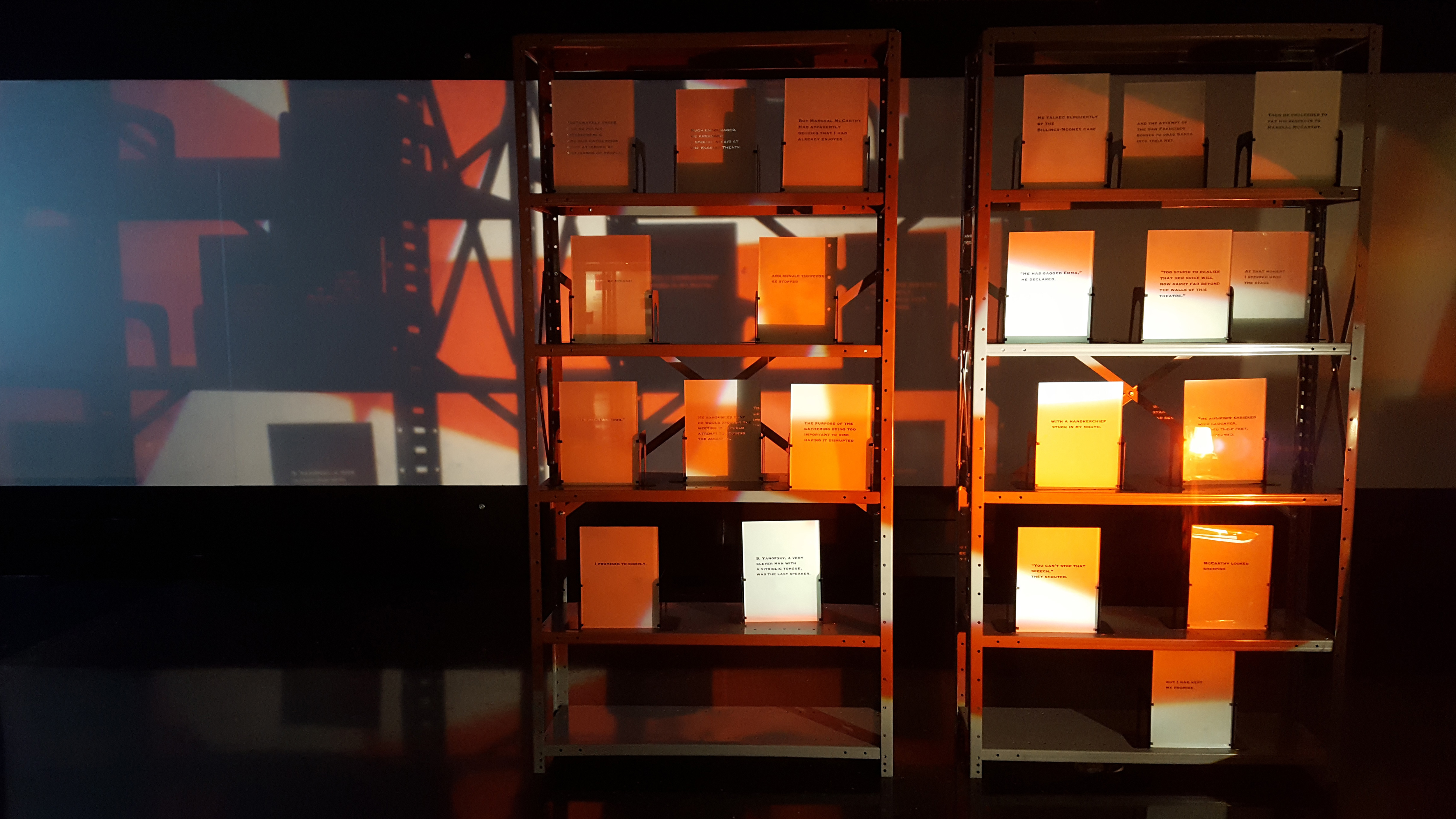









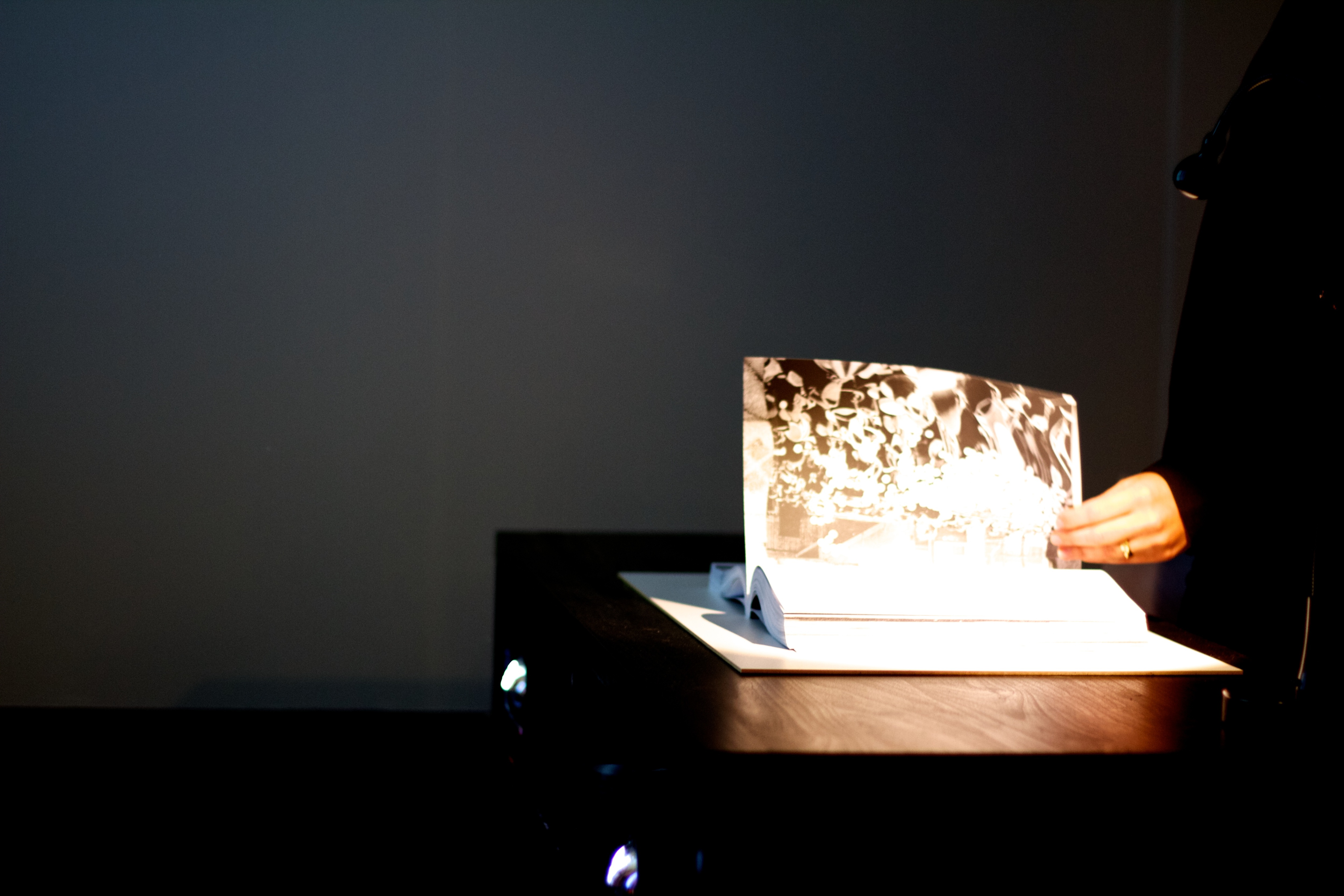






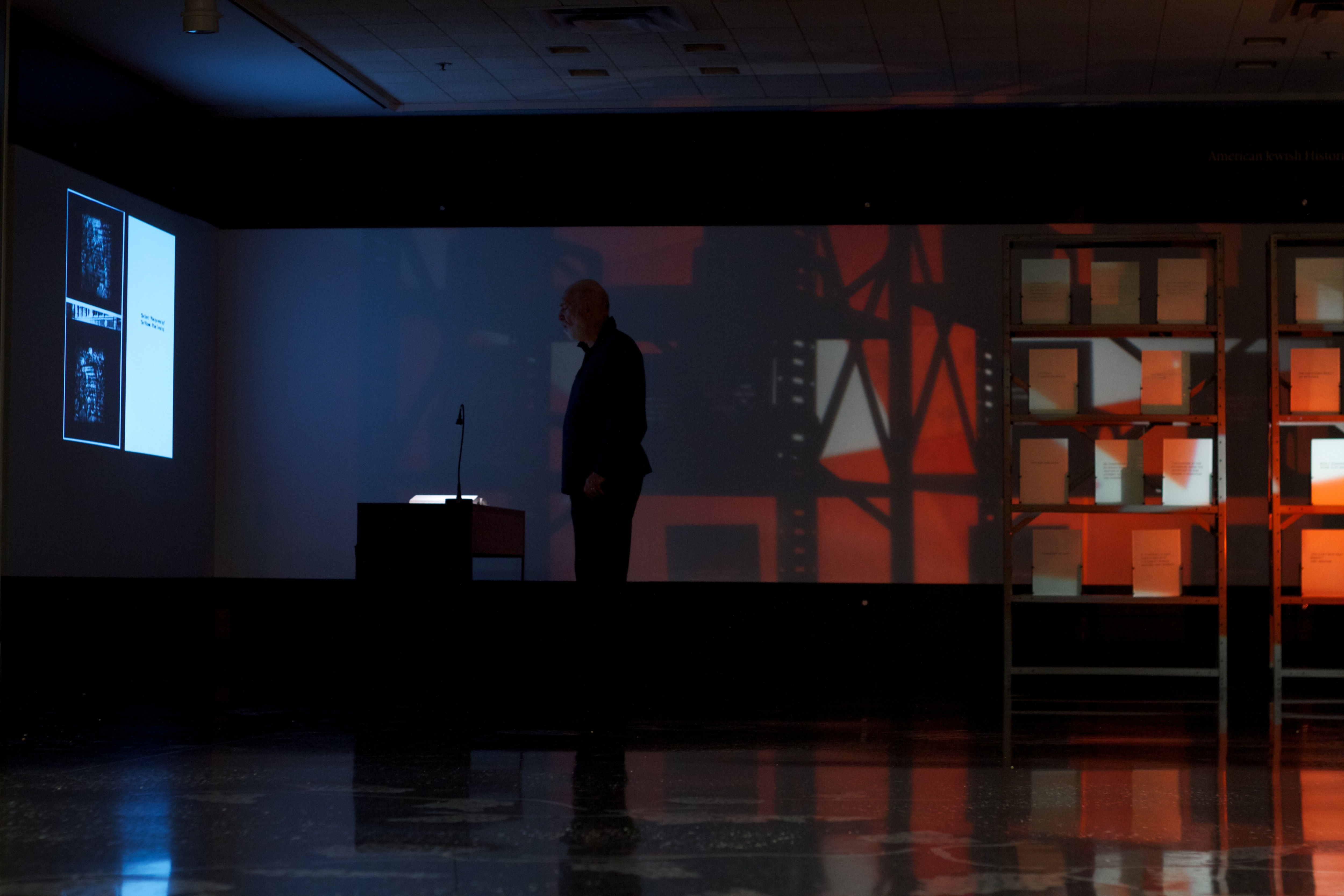




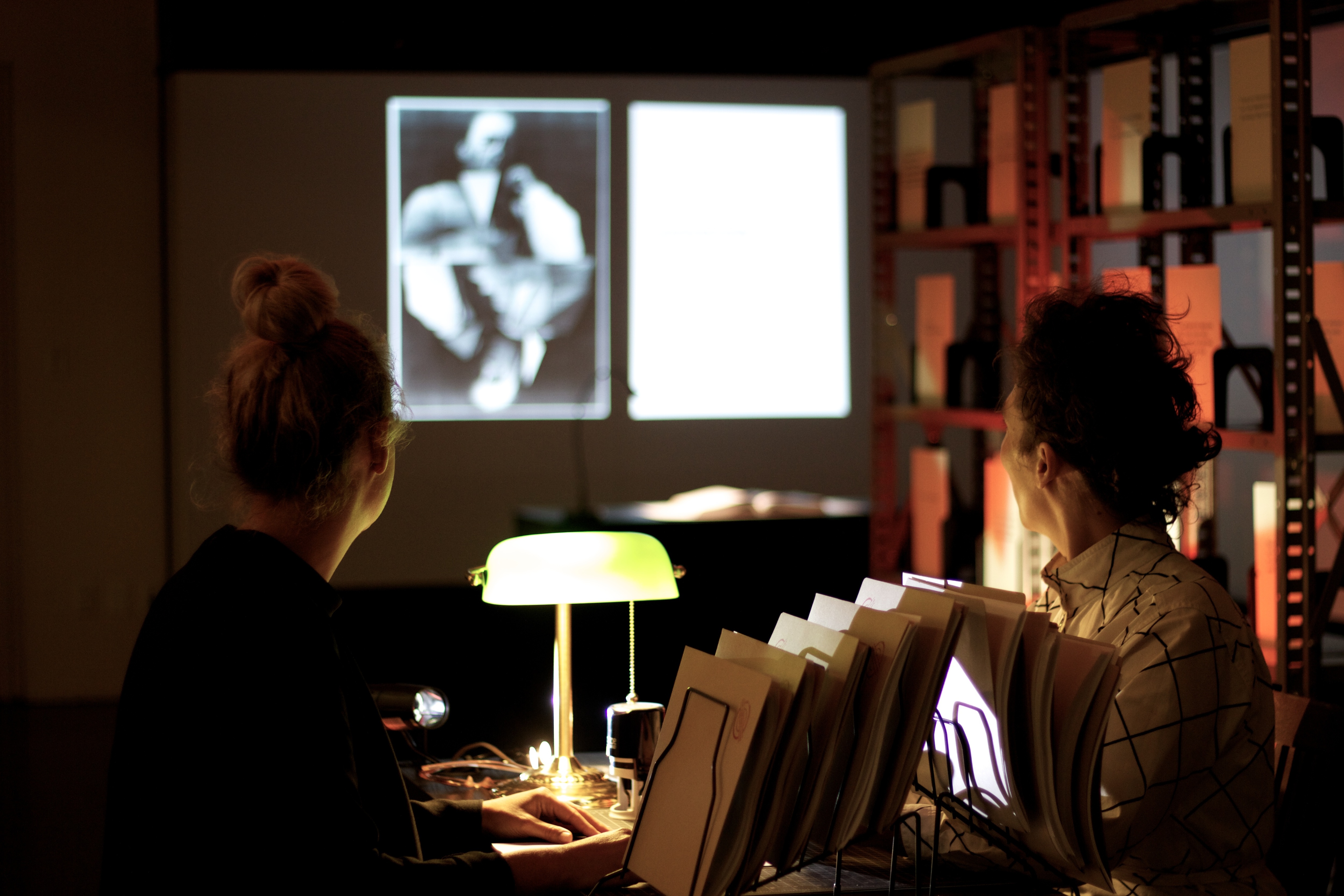



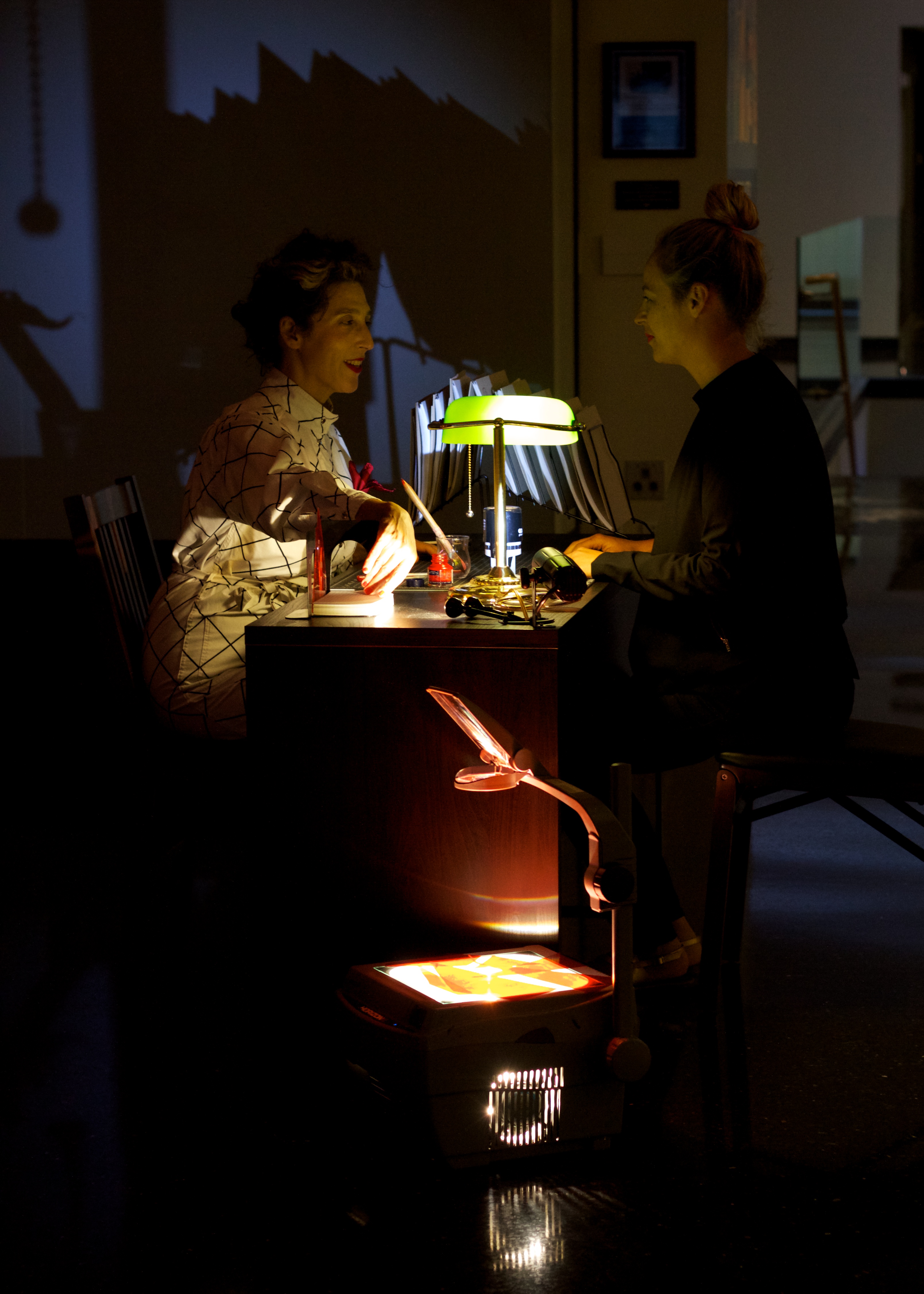






IN THE FACE OF SILENCING
OFRI CNAANI’S FOR HER OWN GOOD
Curator & Text: Shirly Bahar
“She arrived at the auditorium ready to speak in Berkman’
s behalf just in time to be told by a federal marshal that unless she promised not to speak he would lock the audience out of the hall. Ordinarily, Goldman would simply have disregarded such an ultimatum, but feeling the urgency of this particular rally, she reluctantly gave the marshal her promise, then took a seat in the auditorium. When the preliminaries were over and several speeches had been delivered, the time came for Goldman's speech. As the chairman began explaining her regrettable absence, out onto the stage strode Red Emma, a large handkerchief stuffed in her mouth. There she stood facing her audience without a word, as she had promised. It brought down the house." (Alix Kates Shulman, Red Emma Speaks).
For Her Own Good is a mixed media installation poetically reshuffling textual and visual snippets from the multiple archives and accounts associated with the life and career of Emma Goldman. Indebted to and building on a myriad of texts, films, and exhibitions about Goldman, For Her Own Good
takes a close look at the 3 significant months of the summer of 1917 during which she was trialed, convicted, sent to two-year imprisonment and subsequently– deported to Russia. On June 15th 1917, Goldman and Alexander Berkman were arrested under the newly initiated Espionage Act and charged with encouraging people to refuse enlistment to the US Army which just entered WWI. On September 11th, 1917, Goldman made one of her most powerful - and as it turned out, her final -public appearance in the US. In that appearance, Goldman was on bail and thus not allowed to speak, as she was told, “for her own good.” Yet as the quote above indicates, Goldman staged a performance of both silencing and persistence that spoke for her instead. Although quite forgotten, For Her Own Good retrieved the memory of that performance, re-collecting the threads that guaranteed it lived on through the incarceration and exile of the reluctant returnee who kept writing her-story tirelessly.
Echoing the inspiring interplay between authoritative decrees and personal expressions that Goldman’s finale performance embodies, For Her Own Good weaves together her own words about her experience of that performance with words employed by officials to scrutinize and incriminate her during her trial. 21 etched glass boards display, fragment, and scatter Goldman’s story of her performance as she recounted it in her autobiography Living My Life. A video projection arbitrarily couples and scuffles between verbal procedures from the closed hearings and Dada-like visual collages juxtaposing various found objects with portraits of Goldman. A printed book with the same images and quotes rests open and available for leafing. The various media inhabit a bureaucratic-seeming setup composed of repurposed items typically or
traditionally used by archivists. As the Xerox machines assist the installation in casting its shaped shadows on the back wall, choreographed only to the subtle ticking soundtrack of a slide carousel, we are left with discreet specters of the discursive circumstances that once constituted the “The Most Dangerous Woman in America.” For Her Own Good invites us to read between the lines and cracks of light; contemplate questions of archiving, re-arranging, sorting, storing, and storytelling; and trace infinite perspectives on and narrations of the closed hearings and public non-speech of a powerful orator and performer. Perhaps we can even sense some remnants of Goldman’s rebellious spirit and affective presence that history had shed and deposited around her favorite speaking public space of Union Square.
“Have you ever been told to stay silent ‘for your own good?” Cnaani posed the question on social media, and the responses poured. In a special performance conducted on opening night of For Her Own Good, Cnaani sits down behind a desk amidst the installation and shares the stories that she collected from the responders – overwhelmingly, women– with individual spectators, who also receive a stamped copy of the heard story. Cnaani addresses her audience like a clerk granting an applicant their long desired, finally signed visa documents. Yet, instead of numbered papers that secure certain rights, the reports she reads and hands them articulate interpersonal, legislative, and/or systematic acts of deprivations and denial of the voice. The stories that Cnaani tells include testimonies of anonymous women as well as quotes from interviews with various political activists and public figures that have experienced silencing. For example, one might listen to a quote from Dareen Tatour, a Palestinian poet and citizen of Israel who has been under house arrest for almost two years in Israel for posting a poem in Arabic consisting of the word
“resist” on her Facebook account. The souvenir delivered to the spectator here is actually the very opportunity to relate to the experience of being hindered from
ability to speak one’s poems, ideas, wishes, needs, or distress. Like a note from a self-help booklet, the stories convey some useful everyday tactics of how to communicate a message in the face of conditions that silence the spoken voice, despite oppression and against all odds. As this installation highlights, such tactics comprise an important part of Goldman’s legacies as an activist whose thought and action remain unpopular and challenging even after 100 years.
September 2017
Special Thanks to: The Emma Goldman Papers, Berkeley Library, University of California The Arthur and Elizabeth Schlesinger Library on the History of Women in America, Radcliffe Institute for Advanced Study, Harvard University The Hathi Trust Records of the War Department General and Special Staffs Series: American Unofficial Collection of World War I Photographs NYPL Digital Collection Library of Congress Prints and Photographs Division
PBS